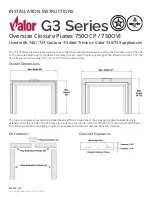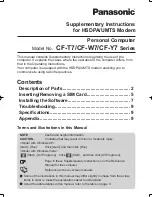
39
E
FA
Q
6
Do I need a power supply for the PRO35?
Yes, you need a power supply to run the motor of the PRO35 for the oscillation of the
target. The PRO35 is delivered by default with a power supply cable for the lens con-
nector (Hirose 12-pin/ Fischer 7-pin) on the camera. This allows you to use the same
battery for the PRO35, you run your camera with. Over and above plenty of alternative
power supply cables are available to use different power and battery systems (i.e. with
Anton Bauer, Digibeta Hirose or XLR connectors). For further information please refer to
our Price list.
Why is there an ON/Off switch on the PRO35 Image Converter?
As specifi ed in FAQ [How does the PRO work] the image generated by the 35 mm front
lens is projected in a fi rst step onto a ground glass-like target. In a second step this
image is resized by a relay lens system to the smaller-sized video chip. The target itself
carries a structural pattern to visualize the image created by the front lens. If the target is
motionless, this pattern is stamped on the image and appears like some kind of dirt on
the lens.
In order to blur this structural pattern the Image Converter has to be switched on. The
target starts oscillating whereby the structural pattern appears in a fi lm grain-like manner.
Why is there a speed control on the PRO35 Image Converter?
As specifi ed in FAQ [how does the PRO work] the image generated by the 35 mm front
lens is projected in a fi rst step onto a ground glass-like target. In a second step this
image is resized by a relay lens system to the smaller-sized video chip.
The target itself carries a structural pattern to visualize the image created by the front
lens. If the target is motionless, this pattern is stamped on the image and appears like
some kind of dirty on the lens.
In order to blur this structural pattern the target is set into an oscillating movement,
whereby the structural pattern appears in a fi lm grain-like manner.
The speed control now diversifi es the target’s oscillation frequency. This provides the op-
portunity to eliminate disturbances or interferences caused by high shutter speeds or to
achieve different grain effects, also depending upon the iris opening of the front lens.
How to adjust the target’s oscillation speed?
For information on the adjustment of the target’s oscillation speed please consult chap-
ter 2.3.3.
What is the iris in front of the B4-Mount of the Image Converter for?
The PRO35 is equipped with an iris. However this iris only serves to light reduction.
This offers the opportunity to shoot in bright environments with a wide opened front
lens aperture (in order to obtain a narrow depth of fi eld) without overexposing the video
cameras CCD-chip. Therefore the Image Converter’s iris is comparable to a variable ND
function. But there is no infl uence on depth of fi eld, because the light source, relating
to this iris is no three-dimensional environment, but the two-dimensional image on the
target, which obtains just one focus plane.
That is why the depth of fi eld isn’t infl uenced by the Image Converter’s iris.
In summary: For a camera setup with the PRO35 Image Converter the aperture of the
14.
15.
16.
17.
18.











































